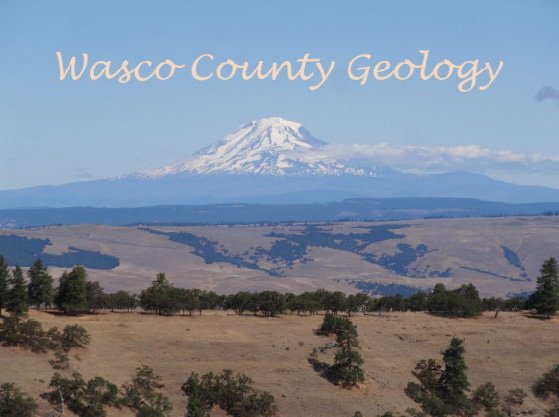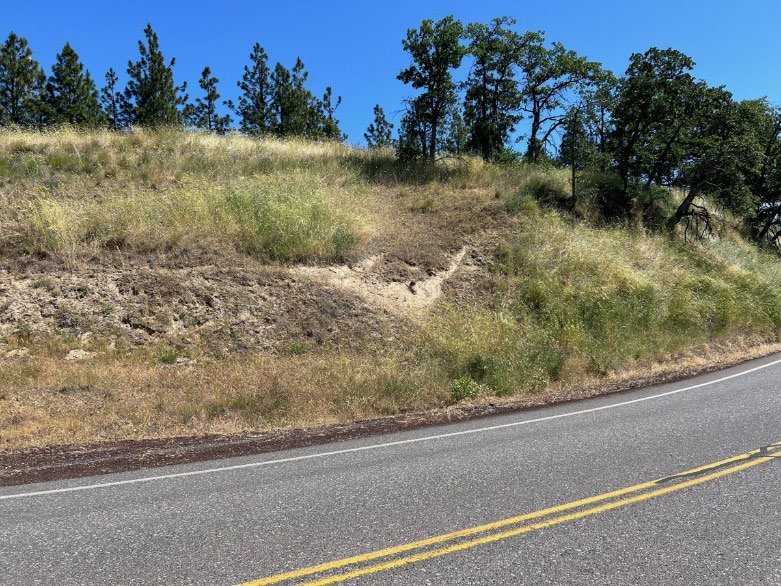In the fall of 1924, the boys left for Salem, Oregon, where they enrolled at Willamette University. They worked their way through college doing janitorial work, running the university bookstore, and working at the State Highway laboratory. After earning their B.A. degrees in 1928, the brothers went their separate ways: Henry to the Harvard Medical School and Louis to Stanford University. After receiving his M.A. degree in education and psychology in 1930, Louis began his teaching career at the Milwaukie Union High School. In 1936, he joined the Civilian Conservation Corps where he served as educational advisor at Camp Sherman on the beautiful Metolius River near Sisters, Oregon.
His love of the out-of-doors led him to join the Mazamas, the Trails Club, and the Audubon Society for which he has served as a director for many years. He has also participated in the annual Christmas nation-wide bird census for about thirty years.
Louis first became acquainted with geology when he read an account in the Oregonian that Dr. Edwin T. Hodge was going to teach a course in geology at the Old Lincoln High School. Being a member of the Mazamas and having climbed both Mt, Hood and Mt. St. Helens each twice, he wanted to learn more about these mountains and their landscapes as well as the great Willamette Valley which had seemed such a contrast to him from the Horse Heaven hills of eastern Washington. He attended the class and was so impressed by the friendly learning atmosphere that he decided to become a charter member of the society that was formed to continue the post class studies. There was so much enthusiasm for this new activity that the students elected their popular teacher to become the first president of the organization that they voted to name the Geological Society of the Oregon Country.
While teaching biology at Roosevelt High school, Louis met and fell in love with Viola Lagasse who came to teach English and drama. They were married on December 18, 1938. After they established a home near Grant High School where Viola had been transferred and after Dr. John Cyprian Stevens had employed her to be his assistant in initiating a campaign to build a museum of science and industry for Oregon, their daughter, Mary Louise, was born on February 7, 1946.
Louis has held most of the chairs in the Portland Men's Garden Club from 1947 to the presidency in 1955; he was secretary then president of the Pacific Northwest Region from 1953 to 1960; and finally director of the National Men's Garden Clubs of America from 1961 to 1964. Besides earning two green thumb awards he has received a certificate in 1965 and a plaque in 1968 for outstanding service to the Men t s Garden Clubs of America. In 1948 he was awarded a Conservation scholarship to the University of California at Santa Barbara by the Portland Women’s Federated Garden Clubs, and in 1951 he was appointed by Governor Douglas McKay as Chairman of the State Liberty Garden Committee. In 1958 he received the Silver Trophy award from the Union Carbide Company for the "Oregon Gardener of the Year.“ In 1961 he was the biology and geology counselor for the Oregon Museum of Science and Industry Youth Tour of Central Oregon. In the spring of that year he was selected to be the biology pilot teacher of his school for the following year and was awarded a scholarship to the American Institute of Biological Sciences at the University of Colorado at Boulder.
He was retired from teaching in the Portland Public Schools in June of 1969, and since that time he has been Soil Consultant for the Multnomah Intermediate Education District Outdoor School at the seven week sessions each fall and spring. He continues to serve as test counselor for Boy Scouts who are completing their studies for the Nature Merit Badge.
Recognizing Oregon's talented geologists seemed most important to the life of the Geological Society during Louis' year of presidency. He decided to hold his President’s Campout on Condon' s First Island in the Siskiyou Mountains, in honor Of Oregon's first state geologist. Dr. Paul W. Howell, professor of geology at Portland State University, assisted by Len Ramp, geologist of the State Department of Geology and Mineral Industries at Grants Pass, were the field trip leaders during the week-long session. Robert Gamer of Salem and Norman Peterson of Grants Pass, both able geologists and locally knowledgeable of the area, also assisted with their fine leadership in explaining the geology both on the field trips and at the Campfire briefings.
All of the speakers at the Friday night membership meetings during the 1970—1971 year have been Oregon men and women experts in their fields of science. The Library Night in-depth discussions and mini lectures have also been drawn from our own membership specialists. He chose Dr. John Eliot Allen, head of the earth science department at Portland State University, for his annual banquet speaker especially to challenge him to accept the mantle of his former teacher, Dr. Edwin Hodge, in the future leadership of the Society.
By using the talent of local earth scientists both amateur and professional, Louis feels he was helping to contribute to the good climate which is conducive to the study of geology in Oregon and to the fulfillment of the aims of the Society.
Please see The Geological Newsletter, Vol. 36, No. 9, Sept. 1970, for Campout story and pictures.
LEO/VLO











































































